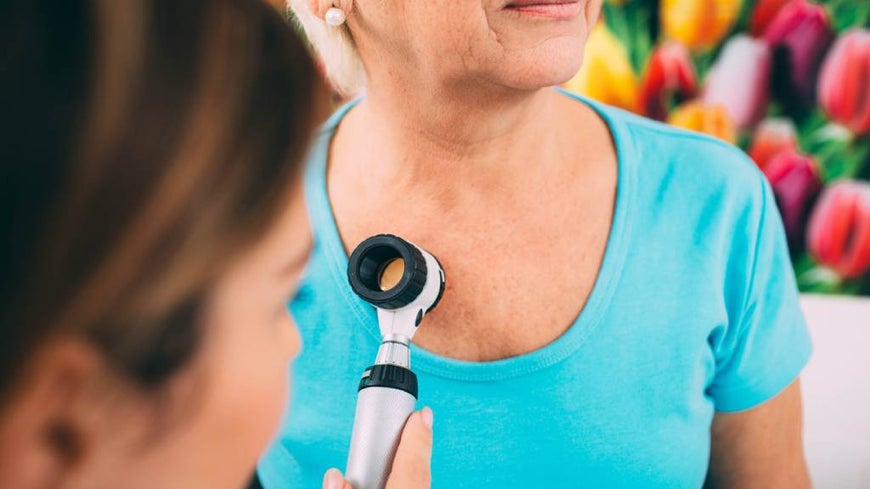How to spot and prevent skin cancer

Written by Sandra Bridekirk for Australian Seniors.
Australia is famous for its sun, sand, and surf – but the downside of our lifestyle is having one of the world’s highest rates of skin cancer. It’s a sobering fact that about two in three Australians will be diagnosed with skin cancer before the age of 70, with the majority of cases caused by exposure to ultraviolet (UV) radiation from the sun.
There are three main types of skin cancer – melanoma, the most dangerous form, basal cell carcinoma (BCC) and squamous cell carcinoma (SCC), which occurs mostly in the over 50s.
“While non-melanoma skin cancers [NMSCs] are typically less deadly than melanoma, they’re responsible for a large number of treatments – more than 2,500 are treated in Australia every day,” says Paige Preston, chair of the National Skin Cancer Committee at Cancer Council Australia. “The most common treatment is surgery to remove the cancer, which is usually performed under a local anaesthetic. Many skin cancers can be treated with ointments or radiation therapy.
“Skin cancer can also be removed with cryotherapy where liquid nitrogen is used to freeze the cancer off, curettage [scraping] or cautery [burning]. More advanced cancers may require chemotherapy, radiation, or immunotherapy.”
Melanoma is the third most common cancer in Australia and caused 2.9% of all cancer deaths in 2020. “The incidence rate for melanoma increases with age,” says Paige. And the damage may have been done decades ago, when a tan was considered ‘healthy’.
“Skin damage is cumulative, meaning that it builds up over time,” says Paige. “The good news is it’s never too late to improve your sun protection routine.”
5 skin cancer awareness tips by Paige Preston
Here are 5 things you should know about skin cancer and how to potentially prevent it.
#1: Prevention is better than cure
Sun protection is important, but it isn’t always at the front of people’s minds – 95-99% of skin cancers are preventable.
#2: Slip, slop, slap
Whenever the UV index is 3 or above, remember the five things that will greatly reduce your risk:
- Slip on sun-protective clothes.
- Slop on SPF30 (or higher) broad-spectrum, water-resistant sunscreen.
- Slap on a broad-brimmed hat.
- Seek shade.
- Slide on sunglasses.
#3: See your doctor
Talk to your doctor about your level of risk and whether regular skin checks are needed. Become familiar with your skin and visit your doctor if you notice new spots, or changes to existing spots.
#4: Skin changes are worth checking out
Look for changes including crusty, non-healing sores; small lumps that are red, pale, or pearly in colour; and new spots, freckles, or any moles changing colour, thickness or shape over a period of weeks to months.
#5: Know the UV index
On days when the UV index is forecast to be 3 or above, incorporate sunscreen into your morning routine – this will assist in reducing your incidental exposure to UV. Download the free SunSmart app for current UV levels and recommendations.
For more information, go to the Cancer Council website.
Get the latest take on trending issues, smart tips to boost your financial goals, or a fresh way to indulge in everyday joys, all from the comfort of your favourite reading spot with DARE magazine from Australian Seniors.
DARE also features exclusive stories from some of Australia’s favourite personalities.
26 Apr 2021